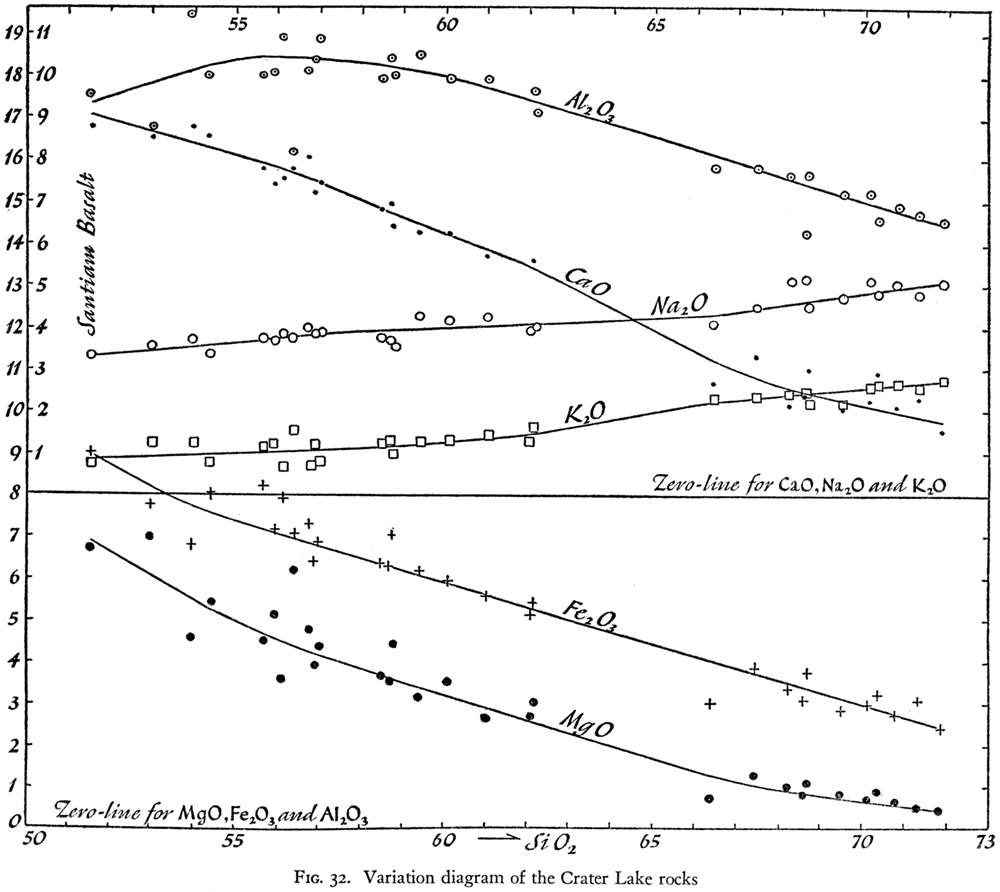We may now inquire concerning the Eocene-Miocene rocks of the Western Cascades and the igneous rock series-in the region east of the High Cascades. Thayer13 has shown that, compared with the rocks of the Western Cascades, the Pliocene and younger rocks of the High Cascades are richer in A1203 in the range above 53.5 per cent SiO2, in lime above 55 per cent SiO2, and in Na2O above 65 per cent and below 56 percent SiO2, and are generally richer in magnesia. The Western Cascade lavas are consistently richer in iron oxide and potash. From the available evidence, it is clear that the Western Cascade lavas belong to the calc-alkaline series, for the alkali-lime index is 58.6. Since the High Cascade lavas are generally richer in alumina, lime, soda, and magnesia and poorer in potash and iron, it is possible that they were derived by crystal differentiation of a magma common to both, for the settling of early-formed feldspars and magnesian minerals would readily account for the differences. Certainly a sharp break seems to have occurred in the magmatic history of the Cascade volcanoes at the close of the Miocene, and perhaps this sudden change was related causally to the strong orogenic disturbances which took place at that time.
To the east, on the other hand, in the Medicine Lake Highlands of northern California, and at the Newberry volcano of central Oregon, calc-alkaline magmas were being erupted simultaneously with the calcic magmas of the High Cascades.
Throughout the High Cascades, at least in Oregon, the dominant lavas are either olivine basalts or olivine-bearing basaltic andesites such as tho4 which immediately underlie Mount Mazama and form the bulk of the volcanoes to the south. Indeed, scarcely any other type of lava was erupted in the High Cascades during Pliocene times. Subsequently, at certain centers on and near the crest of the range, differentiation led to the eruption of hypersthene andesite and of more acid types. At these centers, large composite cones, including Shasta, Mazama, Hood, Adams, Rainier, and Baker, were built. Yet even while these were active, olivine basalts and basaltic andesites continued to escape from neighboring vents. Thayer has noted a similar relationship in the vicinity of Mount Jefferson :
The occurrence of large andesitic cones literally in the midst of small basaltic cones suggests that the more acidic lavas were erupted from comparatively small pockets or cupolas in the main magma chamber. The localization of differentiation may have been due to local cooling, shown by the porphyritic nature of the andesites and associated basalts in the high peaks as compared to the uniformly fine-grained textures in the basalts of the smaller cones.14


